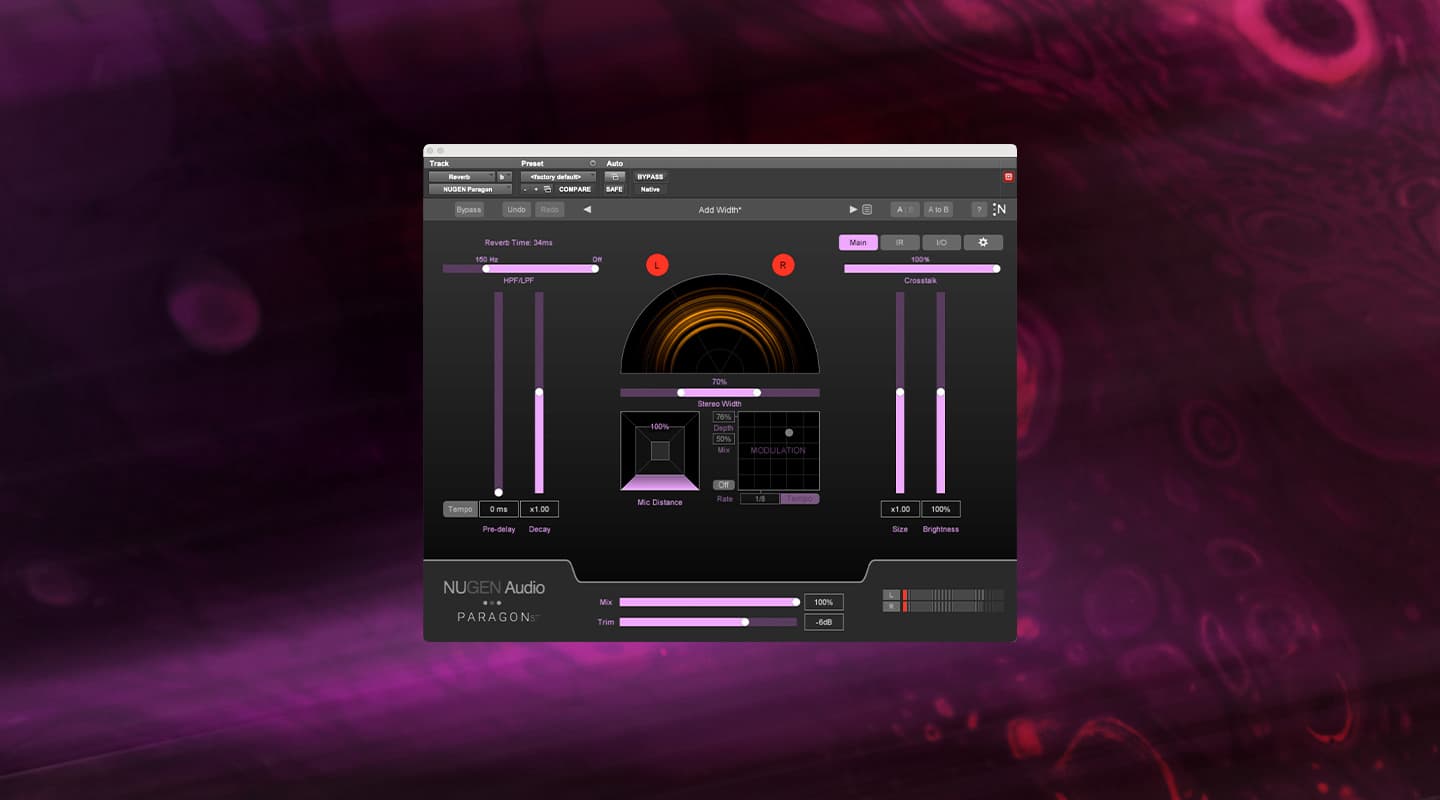
Review: Nugen Audio Paragon ST
Paragon ST brings the best of both convolution and algorithmic worlds to the stereo domain.
Paragon by Nugen Audio is a convolution reverb plug-in with the tweak-ability of an algorithmic reverb. Its Dolby Atmos compatibility and wide range of impulse response options (including outdoor spaces) makes Paragon a favourite for broadcast and post production spatial emulators.
I was fortunate enough to hear Paragon in action at one of Australia’s first Dolby Atmos studios in Australia. Hearing a mix in Atmos is exciting enough, but adding a realistic reverb in full 7.1.2 makes for a stunning listening experience.
But not everyone needs the CPU burden of a reverb plug-in crunching out 10+ channels in real-time. For the music production folks still content mixing on two speakers, Nugen Audio has released a stereo version of Paragon (hence the ST) with the same DNA and capabilities as its multi-channel antecedent.
SHINING EXAMPLES
There’s a veritable plethora of ways to use Paragon ST, and the excellent presets are the best way to sample its power. In alphabetical order, the first few presets are about as different as you can imagine but all equally usable. ‘Abbey’ is appropriately cavernous, ‘Add Presence’ has a tight zing, ‘Add Warmth’ has log cabin and fireplace vibes, and the next ‘Add Width’ preset subtly broadens a mono source in the stereo field.
Should you desire to dial in a more specific reverb type, Paragon ST gives you all the levers you’d want and then some. The GUI is broken up into a few views. The Main view offers regular control such as HPF/LPF, pre-delay, decay, size, and brightness. The stereo width setting extends out to 200% and uses the fantastic Linear Width algorithm from Nugen’s Stereoizer – a plug-in I employ often. Pre-delay can be set either in milliseconds or locked to a subdivision of the session’s tempo. More uniquely, the Crosstalk control adds signal from the left channel into the right, and vice versa – a great way to liven up a source.
Two big sweeteners in Paragon ST are the Mic Distance and Modulation functions. Mic Distance adjusts early reverb reflections to realistically give the sense that you’re closer or further away from the source sound. Modulation can be fluidly adjusted on a depth/rate grid with the option of tempo-locking rate.
AUTHENTICITY
Actual recordings of real spaces form the building blocks for the Paragon ST plug-in. Hence, the decay and size controls display as a multiple of the original impulse response; x1.00 is the original recording, whereas any other setting like x1.5 or x0.7 is a re-synthesis of the space. By using re-synthesis there’s no time stretching weirdness or artefacts. This is how Paragon ST combines the realism of a convolution reverb with the control of a great algorithmic reverb.
The different impulse responses are accessed on the second window labelled IR. A Spectogram greets you with a visual representation of the impulse response against the frequency spectrum. Switch to the Modifier to shape the EQ curve to your liking. A feature of Paragon ST is both indoor and outdoor impulse responses – you’ll find reverb models ranging from more typical Chamber, Stairwell and Large Theatre through to unconventional options like Hotel Room, Snow Forest, Office and Car. All are beautifully accurate – make sure Decay and Size are set to x1.00 in the Main window to hear these in their untouched glory. However, changing things up doesn’t render an IR any less convincing. Increasing the Car model up to x1.8 could totally be the impulse response of a 12-seater van. You might think that’s all a bit gimmicky for music productions, but what’s even more uncanny is I’d gladly use my ‘van’ setting as a vocal reverb – the reverbs sound that good.
I appreciate that Paragon ST has test sounds built into the plug-in. These appear in the IR window and include Music (guitar, bass drum, harmonica, singing) and Foley (footsteps, jangling keys, door closing, camera, handgun) options. I found the test sounds a valuable aid in auditioning how a reverb setting translates across different sources.
NEED TO KNOW
Nugen Audio Paragon ST
Convolution Reverb Plug-In
GET IN CONTROL
The I/O window offers a few big picture adjustments of both channels separately. These include solos of left and right channels, trim (at either the input or output stage) HPF/LPF, pre-delay, decay, crosstalk, and on/off. You probably won’t spend much time here if you’re mixing music but you can imagine the I/O window’s utility on the high-channel-count Dolby Atmos version.
The gear icon opens the final window with extra settings and a bunch of GUI colour options. Mix and Trim amounts remain accessible at the bottom of the plug-in regardless of which view you have open. Paragon ST has a ‘User’ folder for saving your own presets and A/B option to compare different settings. Unlimited undos is a great reassurance if you get lost down a reverb-tweaking rabbit hole.
I used Paragon ST in a few Pro Tools recordings made over the past year. In every one of them, it excelled. With an instrument or voice soloed, the reverb’s lushness, detail and realism is unmistakable. When I snapped back into the full mix there was an overall sense of space, depth and vitality that gave the whole production a sophisticated and expensive feel. Paragon ST is perhaps over-engineered for most music mixing applications – we have the original Paragon to thank for that. But let that assure you, if you have a reverb sound in your head, it probably lives somewhere inside this plug-in. Tight, focussed rooms through to deep, cavernous cathedrals, and everything in between; Paragon ST delivers them all with the benefits of convolution authenticity and algorithmic flexibility.
Paragon ST is available in 64-bit AAX, VST3, AU and AudioSuite formats and goes for US$299.

















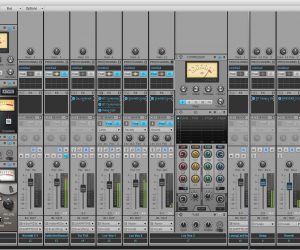
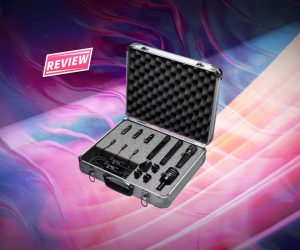
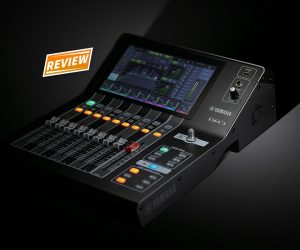






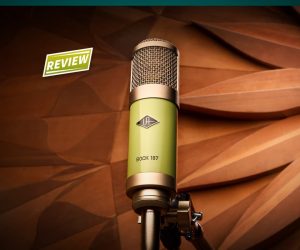

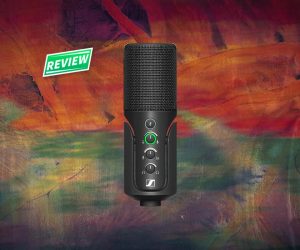


RESPONSES